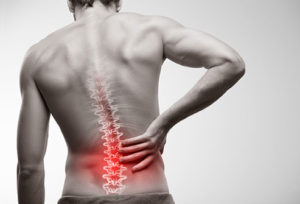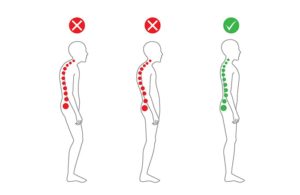 Pilates exercises help to build beautiful abdominal muscles, but can they relieve back pain too? Even some physical therapists and chiropractors recommend Pilates for chronic back pain. I have many clients who come to my Pilates classes questioning if this type of fitness training can ease lower back discomfort for the long term. Let’s see what science says about it.
Pilates exercises help to build beautiful abdominal muscles, but can they relieve back pain too? Even some physical therapists and chiropractors recommend Pilates for chronic back pain. I have many clients who come to my Pilates classes questioning if this type of fitness training can ease lower back discomfort for the long term. Let’s see what science says about it.
Pilates for Back Pain: Does It Help?
According to a study published in the Journal of Sports Rehabilitation, Pilates exercises help to ease back pain. Participants who took part in fifteen Pilates training sessions had less back pain and were able to walk better after completing this training. Even better was the fact the 39 adults who took part in this program still had less back pain a year later. Stronger abs and less back pain, certainly Pilates training has its advantages.
How Pilates Exercises Work
Pilates training strengthens core muscles, the group of muscles that work in unison to stabilize the spine. Pilates focuses on all of the core muscles so the spine is more balanced and stable, which helps to reduce stress on the back. Focusing on only the abdominal muscles without strengthening the muscles of the back, as some other types of fitness programs do, can destabilize the spine and worsen back pain.
 Pilates exercise also improves posture and spinal alignment, creating a neutral spine where the three natural curves of the back are in proper alignment. This greatly reduces stress on the back and even helps to expand the lungs better during breathing, thus improving spine mobility.
Pilates exercise also improves posture and spinal alignment, creating a neutral spine where the three natural curves of the back are in proper alignment. This greatly reduces stress on the back and even helps to expand the lungs better during breathing, thus improving spine mobility.
Pilates also helps to stretch out achy lower back muscles and reduce tightness and spasm. Although some people are reluctant to exercise with back pain, controlled stretching exercises are one of the best ways to relieve back discomfort. Studies show that bed rest and lack of activity actually makes back pain worse, not better.
Pilates for Back Pain: The Bottom Line
Pilates for back pain has many benefits. It helps to strengthen core muscles that support and stabilize the spine – and improves posture and flexibility. It also reduces the risk of further back injury by strengthening the muscles that support the spine. Another bonus? You could end up with a six-pack too.
References:
Fitness Prescription. February 2011. page 26.
